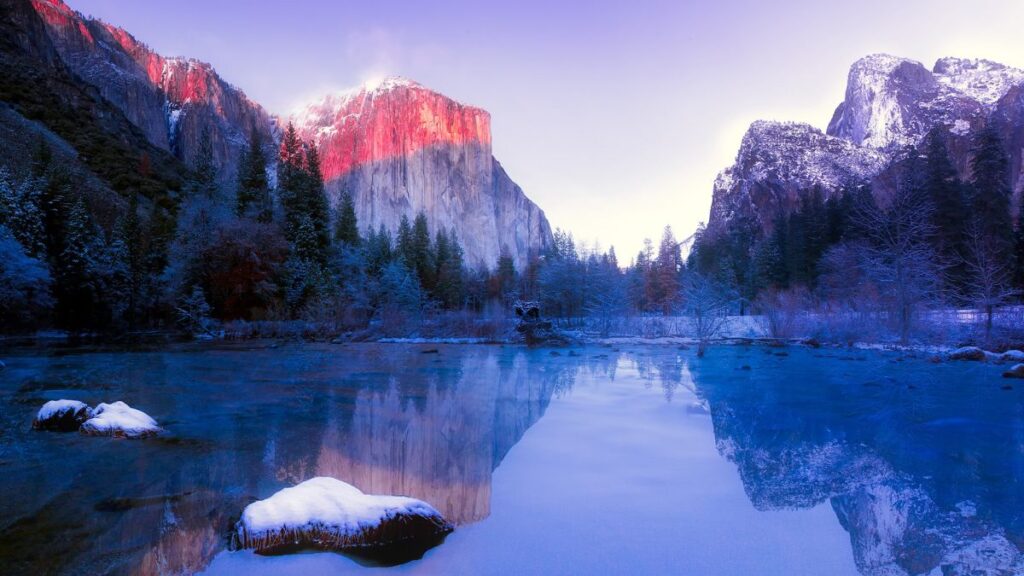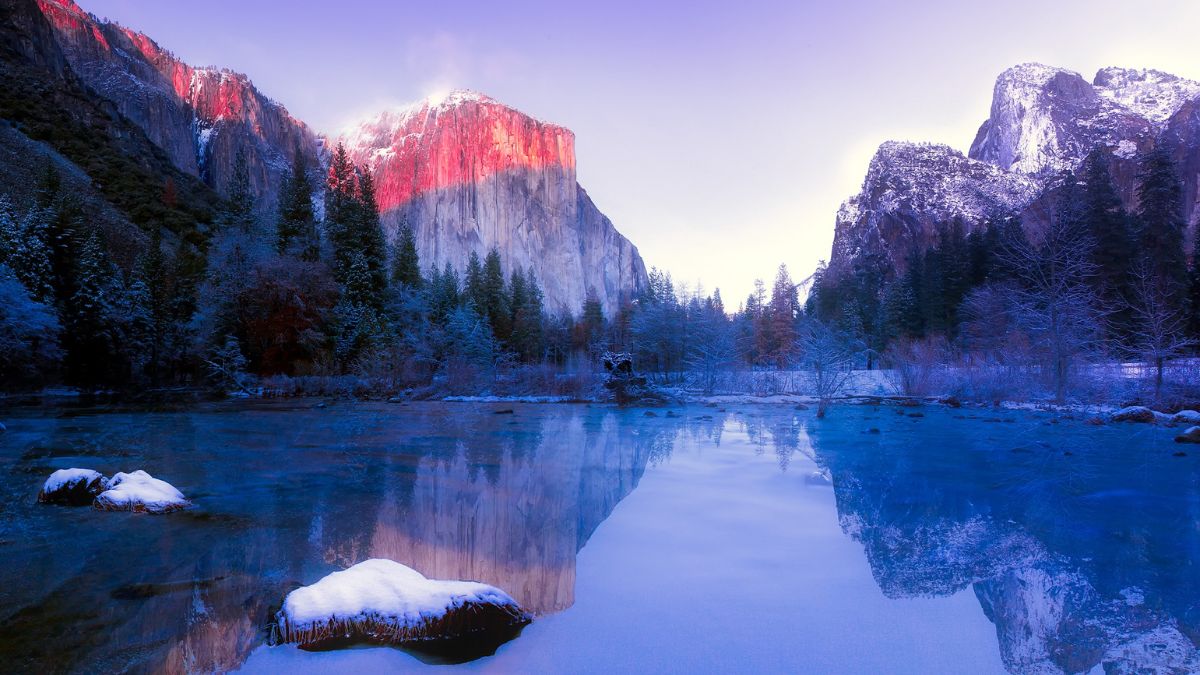Yes, it does snow in certain parts of California, particularly in the mountainous regions. California is a geographically diverse state with a range of climates, from the warm coastal areas to the snowy peaks of the Sierra Nevada mountain range.
Snowfall is common during winter in the higher elevations of the Sierra Nevada, including popular destinations like Lake Tahoe and Mammoth Lakes. These areas also have ski resorts and attract winter sports enthusiasts.

However, snowfall is rare in most of California’s lowland areas and major cities, such as Los Angeles, San Francisco, and San Diego. These regions generally experience mild winters with cooler temperatures and occasional rain.
So, does it snow in California? Let’s delve into the state’s different regions, examine historical snowfall records, and discuss the factors that contribute to snow in California.
Geography and Climate of California
The geography and climate of California play a significant role in determining the occurrence of snowfall in the state. Here are a few factors that contribute to the snowfall patterns:
- Mountainous Terrain
California is home to the Sierra Nevada mountain range, which runs along the eastern side of the state. These mountains, with peaks reaching over 14,000 feet, significantly influence the weather patterns.
As moist air masses move inland from the Pacific Ocean, they are forced to rise over the mountains. As the air rises, it cools, leading to condensation and precipitation, which can fall as snow at higher elevations.
- Elevation
The elevation of an area is a crucial factor in determining snowfall. Higher elevations generally experience cooler temperatures, increasing the likelihood of snowfall. In California, the higher elevations of the mountain ranges provide the necessary conditions for snow formation during winter.
- Pacific Storms
The Pacific Ocean influences California’s climate. Storm systems from the Pacific bring moisture and precipitation to the state. These storms can penetrate inland and interact with the mountains during the winter, resulting in snowfall in higher elevations.
- Mediterranean Climate
The majority of California experiences a Mediterranean climate characterized by dry summers and wet winters. While the coastal regions of California tend to have mild winters with little to no snowfall, the mountainous areas within the state experience colder temperatures and more precipitation, including snow.
It is important to note that climate patterns can vary from year to year and can be influenced by larger climatic phenomena such as El Niño or La Niña events. These can impact the amount and frequency of snowfall in California.
Snowfall in Northern California
In the northern part of the state, particularly in the higher elevations, snowfall is a regular occurrence in winter. The Sierra Nevada mountain range, stretching across eastern California, receives significant snowfall yearly.
Destinations such as Lake Tahoe, Mammoth Mountain, and Yosemite National Park are renowned for their winter wonderlands, attracting skiers, snowboarders, and snow enthusiasts from around the world.
Snowfall in the Central Valley and Coastal Regions
Moving toward California’s central and coastal regions, snowfall becomes less common. The Central Valley, which runs through the heart of the state, also experiences a Mediterranean climate.
While it occasionally sees light snowfall, it is generally limited and short-lived. Coastal regions, influenced by the moderating effects of the Pacific Ocean, rarely see snow due to the ocean’s ability to stabilize temperatures.
Snowfall in Southern California
Southern California, known for its warm climate and sunny beaches, rarely experiences snowfall in most areas. However, there are exceptions. The region’s higher elevations, such as the San Gabriel Mountains and Mount San Jacinto, can receive snow during winter storms.
Popular destinations like Big Bear Lake and Mountain High offer winter recreational activities for residents and visitors seeking a snowy experience.
Historical Snowfall Records
When examining the historical snowfall records in California, it becomes clear that snowfall varies greatly depending on the region. In the Sierra Nevada mountains, snowfall can reach staggering depths.
For instance, during the winter of 2010-2011, the Sierra Nevada experienced an exceptional snow season, with some areas receiving over 50 feet of snow. However, snowfall is infrequent in coastal and low-lying areas.
Factors Influencing Snowfall in California
Several factors contribute to the distribution and frequency of snowfall in California. Elevation plays a crucial role, with higher elevations experiencing colder temperatures conducive to snow formation.
Another influential factor is the state’s diverse climate zones. California’s climate patterns significantly impact snowfall from the Mediterranean climate in the coastal areas to the alpine climate in the mountainous regions.
Furthermore, atmospheric conditions and weather patterns, such as winter storms, play a vital role in determining the extent and timing of snowfall. Cold air masses from the north and moisture-laden weather systems can result in substantial snowfall events across the state.
Enjoying Snow in California
While snowfall may not be widespread throughout the state, California offers various opportunities for enjoying winter activities. Ski resorts in the Sierra Nevada mountains provide excellent skiing, snowboarding, and snowshoeing conditions.
Overview
Does it snow in California? Snowfall in California varies depending on the region and elevation. While snow is a regular occurrence in the higher elevation areas, it is less common in the coastal and low-lying areas of the state.
Nonetheless, the state’s diverse geography and numerous winter recreational destinations ensure that residents and visitors enjoy snow-filled activities and stunning winter landscapes in certain parts of California.
Frequently Asked Questions
Q: How often does it snow in California?
The mountainous areas, particularly the western slopes of ranges like the Sierra Nevada, experience significant snowfall during winter. Conversely, snowfall is infrequent and typically minimal in the southern parts of the state.
Q: What time of year does it snow in California?
Snowing can start in California as early as November and sometimes continues until April. In Southern California, January and February are the best months for snowfall.
Q: Is California the snowiest state?
No, California is not the snowiest state. New Hampshire is the snowiest state in the US and boasts an average of 174.35 inches of snow each year.
